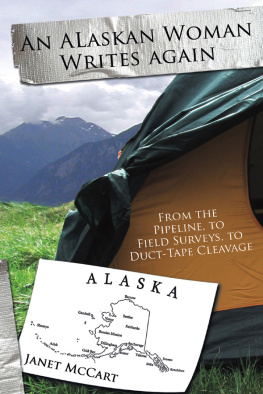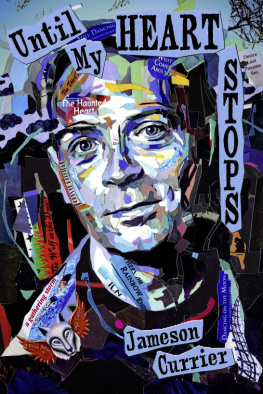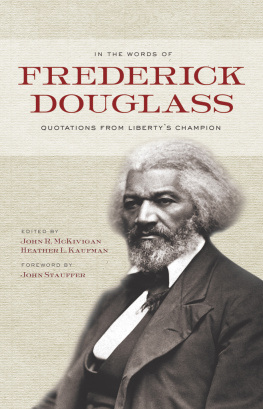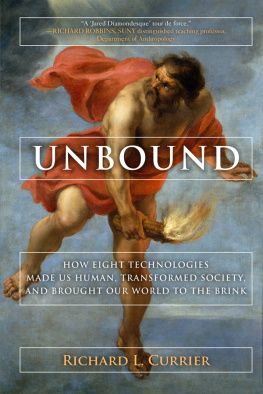Biographical Sketch of James Currier
Frederick James Currier was born on February 13, 1860 in River Falls, Wisconsin to James Kimball Currier and Florilla Locke Currier. He had two younger sisters, Mary Louise and Lillian, and a brother, Harry.
Frederick was always a young man looking for adventure. He loved the outdoors, camping, fishing, and hiking. He was a graduate of River Falls Normal School, majoring in natural sciences. He married Abbie M. Parker of River Falls on June 24, 1885, when he was 25 and she was 22. They had five children: Gladys, Ruth, Donald, Maxwell, and Geneva. The two older children were born in River Falls, and the others were born in Turton, South Dakota, where the family moved to a wheat and stock farm in 1888. In 1893 the family returned to River Falls, leasing the farm in South Dakota, so the older children could be entered in the primary schools and have better educational advantages than were offered in the Dakota territory.
In March of 1894 Fred J. Currier went by way of the Canadian Pacific Railroad to Vancouver, B.C., intending to go down into Oregon to purchase an apple orchard and then move his family out there. Instead, he met two miners in a hotel in Victoria who were about to depart on a trip into the interior of Alaska to seek gold. They showed Fred J. nuggets and invited him to accompany them. Fred accepted, forgetting the apple orchard idea. His memoirs cover the next decade of his adventures as he sought his fortune in the gold fields.
In 1904, he moved his family to the Santa Clara Valley of California, settling in Saratoga where he purchased a prune orchard. The children completed their education in the local schools, with Donald and Ruth later attending Stanford University in Palo Alto, Max going to a mechanical engineering school in San Francisco, and Gladys and Geneva attending San Jose State Normal School.
Freds first wife, Abbie, died in 1908 and is interred in Madronia Cemetery in Saratoga. Freds oldest daughter, Gladys, kept house and looked after the family for the next ten years. In 1913, Ruth married Paul W. Merrill who later became an eminent astronomer at Mt. Wilson observatory in Pasadena, California. A crater on the moon is named after him. Max married Emily Van Hovenberg in 1914; Geneva married Leland Huntington in 1917; and Gladys married James Law in 1918. Donald served in World War I and married Louise Hallmeyer in 1929. All these children are deceased.
Just before Gladys married, Frederick James Currier married Jennie (Jean) B. Smith of Saratoga on April 10, 1918. They honeymooned in various California beauty spots for six months. Fred then accepted a position as manager of the California Prune and Apricot Growers packing house in Red Bluff, California. (He had sold his prune orchard in the Santa Clara valley before his second marriage.) A daughter, Amy June, was born to Jean and Fred on June 11, 1920.
In 1929 the Currier family returned to Saratoga and built a beautiful home on a five-acre wooded estate which they called Brookbanks as the Saratoga Creek ran through the property. They also purchased a prune orchard adjoining the property and Fred went back to ranching for the next six years, until his death on November 25, 1935. His death was the result of a blood clot in the pulmonary artery of the heart after abdominal surgery. He was 75 years old when he died. He is interred in Madronia Cemetery, Saratoga. His second wife, Jean, died in 1971 at the age of 90, and is inurned in Madronia Cemetery also.
There are six grandchildren: Emily Currier Hall, Gordon Leland Huntington, Donald Huntington Merrill, Kirke Currier Jorgensen, Locke Currier Jorgensen, and Rilla Jorgensen Betz, all of whom live in the state of California, the three latter being the children of Amy June Currier and her husband, Colonel John G. Jorgensen, whom she married on May 22, 1943.
At present, there are nine great-grandchildren of Frederick James Currier and several great-great grandchildren.
Frederick Currier on the left.
Foreword
The manuscript for this book was written by Frederick James Currier and edited by his daughter Amy June Currier Jorgensen. It tells the story of Fredericks adventures in Alaska from 1893 1903. Most of the tales take place in Interior Alaska, with some trips up and down the Yukon River.
I first saw a copy of this manuscript in 2007. I was immediately impressed by both the level of adventure and quality of writing. I cant claim to have read every Alaskan adventure book, but I have read most of them. Fredericks Alaskan Adventure compares favorably with the best of this genre.
I shared that original manuscript with a couple friends. They both affirmed my assessment. I concluded that we had to find a way to share this great story with other readers who have similar interests. The first step was obtaining permission from the family. Locating any of Fredericks heirs proved to be a challenge. Once I contacted his granddaughter Kirke Jorgensen, she granted approval to move ahead with the project.
The next step was finding some images to augment the text. My good friend Marty Meierotto took me to the small community of Central, Alaska, where we met with Laurel Tyrrell and Alfred Cook. These folks manage the Circle District Historical Sociatey. Among other things, the Museum contains lots of historic photographs, many of which are from the same time period as Curriers adventures. Thanks to the generosity of Laurel and Al, you will see numerous Museum photos in this book. Justin Maple created several maps for the book, which should add to the readers experience. Ryan Ragan deserves credit for the lay-out and design of the book.
Curriers manuscript contained no mention of the amount of gold that his hard labor produced in Alaska. However, we must assume that he was a successful miner. He had a large boat built specifically for plying the rivers of our State. When he left Alaska, he bought a large tract of land in California. Those are both signs of a successful miner. He demonstrated a commitment to his mining endeavors, which made him successful. I suspect that Currier valued the friendships he forged along the way just as much as he valued the financial rewards.
I admire the men and women who explored and settled Alaska. I am in awe of their fortitude, work ethic and sense of adventure. I have the utmost respect for the hardships they endured. I am grateful to Frederick Currier for documenting his adventures in our State. This finished book is a fitting memorial to the man. The book is long overdue, but according to the old clich Better late than never.
The Alaska Trappers Association is proud to share this outstanding book with our friends around the world. We hope that you enjoy reading it as much as we did.
 By Randy Zarnke
By Randy Zarnke

 By Randy Zarnke
By Randy Zarnke







